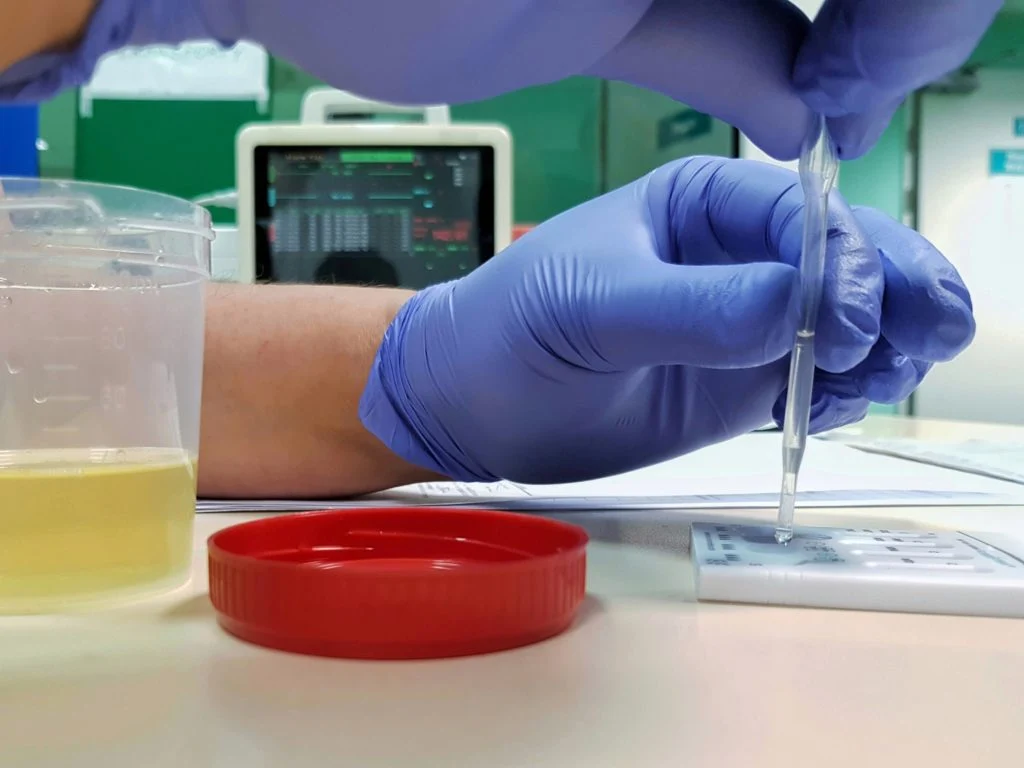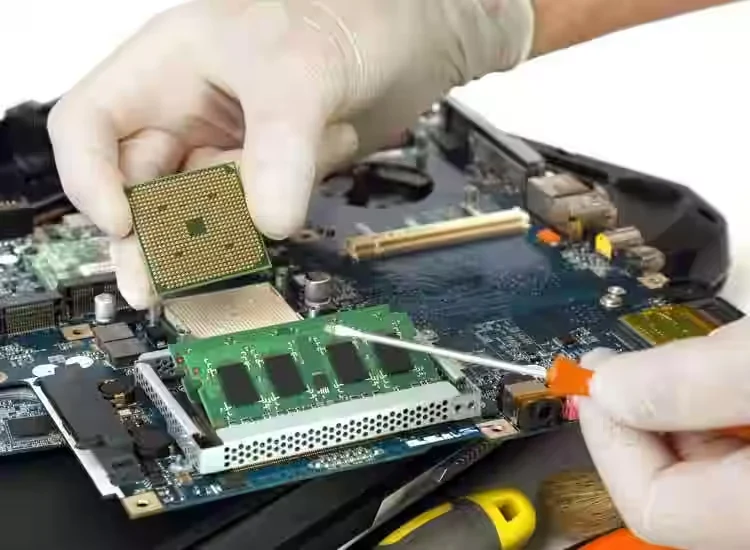In the realm of drug detection, the integration of non invasive drug screening techniques marks a pivotal advancement. Unlike traditional methods requiring invasive sampling, non-invasive approaches offer promising alternatives. Employing technologies like saliva and sweat-based tests, these techniques provide accurate results without the discomfort associated with blood or urine sampling.
By integrating non-invasive screening methods, professionals ensure more accessible and user-friendly drug testing. These methods facilitate workplace screenings, law enforcement operations, and healthcare settings, enhancing efficiency while respecting individuals’ privacy and comfort. Embracing these innovations expands drug detection capabilities, enabling early identification and intervention, ultimately fostering a safer environment and aiding in combating drug abuse.
Key Takeaways
- Drug detection innovation ensures safety and security of individuals and communities.
- Portable drug detection devices enable quick and easy detection of drugs in various environments.
- Advanced analytical techniques like mass spectrometry and chromatography improve accuracy.
- Non-invasive methods like breath, sweat, and saliva testing improve user comfort and allow for more frequent testing.
The Importance of Drug Detection Innovation
Drug detection innovation plays a crucial role in ensuring the safety and security of individuals and communities. With the increasing prevalence of drug abuse and the negative consequences it brings, it is essential to have effective methods of identifying and detecting drug use.
Innovations in drug detection technology have significantly improved the accuracy and efficiency of drug testing processes. These advancements have allowed for quicker and more reliable detection of drugs in various settings, such as workplaces, schools, and law enforcement agencies.
By implementing these innovative solutions, communities can deter drug abuse and create a safer environment for everyone. Moreover, drug detection innovation also helps in identifying individuals who may need assistance and support in overcoming their addiction.
This proactive approach not only protects individuals but also promotes community well-being and fosters a sense of belonging for all members.

Emerging Technologies in Drug Detection
Advancements in the field of drug detection have led to the emergence of new technologies that are revolutionizing the way illegal substances are identified and detected. These emerging technologies are not only improving the accuracy and efficiency of drug detection, but they are also addressing the evolving landscape of drug abuse and the challenges that come with it.
Here are two sub-lists of emerging technologies in drug detection:
- Portable drug detection devices:
- These handheld devices enable law enforcement agencies to quickly and easily detect the presence of drugs in various environments, such as airports, border crossings, and even roadside checkpoints.
- They provide instant results, allowing for immediate action to be taken against drug traffickers and users.
- Artificial intelligence (AI) and machine learning:
- AI-powered systems are being developed to analyze patterns and trends in drug abuse, helping authorities to identify high-risk areas and individuals.
- Machine learning algorithms can also be used to improve the accuracy of drug detection tests, reducing false positives and negatives.
These emerging technologies are empowering law enforcement agencies and organizations in their fight against drug abuse, ensuring the safety and well-being of society as a whole.
Trends Driving Drug Detection Innovations
One of the key factors driving drug detection innovations is the increasing prevalence of substance abuse worldwide. As the problem of drug abuse continues to escalate, there is a growing need for more effective and efficient methods to detect and deter drug use. This has led to the development of various trends in drug detection technologies.
One significant trend is the use of advanced analytical techniques, such as mass spectrometry and chromatography, which allow for more accurate and sensitive detection of drugs in biological samples. These techniques can detect even trace amounts of drugs, enabling earlier identification and intervention.
Another trend is the integration of technology into drug detection systems. This includes the use of portable devices and smartphone applications that can quickly and easily analyze samples for the presence of drugs. These innovations provide convenience and accessibility, making drug detection more accessible to a wider range of users.
Additionally, there is a growing focus on the development of non-invasive drug detection methods. This includes the use of breath, sweat, and saliva testing, which eliminates the need for invasive procedures such as blood or urine tests. Non-invasive methods not only improve user comfort but also allow for more frequent and convenient testing.
Advancements in Portable Drug Detection Devices
The latest developments in portable drug detection devices have revolutionized the field of drug detection by providing a more efficient and convenient means of analyzing samples. These advancements offer several benefits to both professionals and individuals involved in drug detection:
- Enhanced accuracy: Portable drug detection devices utilize advanced technologies such as spectroscopy and chromatography, ensuring highly accurate results.
- Rapid detection: These devices can provide results within minutes, enabling swift decision-making and intervention.
- Increased portability: Portable drug detection devices are compact and lightweight, allowing for easy transportation and field use.
- User-friendly interfaces: These devices are designed with intuitive interfaces, making them accessible to a wide range of users, including law enforcement officers and healthcare professionals.
- Cost-effective solutions: Portable drug detection devices eliminate the need for laboratory analysis, reducing costs associated with sample transportation and processing.
With these advancements, portable drug detection devices empower professionals and individuals alike to effectively combat drug abuse and ensure safer communities.
Enhancing Accuracy and Efficiency in Drug Testing
Portable drug detection devices have significantly improved the accuracy and efficiency of drug testing, benefiting professionals and individuals involved in drug detection.
These devices offer the advantage of being lightweight, compact, and easy to use, allowing for on-the-spot testing in various settings such as workplaces, schools, and law enforcement agencies.
The latest innovations in portable drug detection technology have enhanced the sensitivity and specificity of these devices, ensuring reliable results. Advanced features such as rapid detection methods, automatic result interpretation, and cloud connectivity have further streamlined the drug testing process, saving time and resources.
Additionally, portable drug detection devices are designed to detect a wide range of substances, including illicit drugs, prescription medications, and new psychoactive substances, making them versatile tools for comprehensive drug screening.
The increased accuracy and efficiency provided by these devices contribute to a safer and more drug-free environment.
Future Prospects of Drug Detection Innovation
With ongoing advancements in drug detection technology, the future prospects of drug detection innovation hold great promise for improving the accuracy and efficiency of drug testing methods. As we look ahead, here are some key future prospects to consider:
- Enhanced sensitivity: Future innovations in drug detection are expected to increase the sensitivity of testing methods, allowing for the detection of even lower drug concentrations in the body.
- Rapid and portable testing: Developing technologies aim to provide rapid and portable drug testing solutions, enabling convenient on-the-spot testing in various settings.
- Integration of artificial intelligence: The integration of artificial intelligence algorithms in drug detection systems can enhance the accuracy and reliability of results, reducing the chances of false positives or negatives.
- Non-invasive testing methods: Researchers are exploring non-invasive methods, such as saliva or sweat testing, as alternatives to traditional urine or blood testing, offering more comfortable and less invasive options for drug detection.
These future prospects demonstrate the potential for drug detection innovation to revolutionize the field, making drug testing more accurate, efficient, and accessible for a variety of applications.
Frequently Asked Questions
How Does Drug Detection Innovation Impact Public Safety and Security?
Drug detection innovation has a significant impact on public safety and security. By advancing the technologies used for drug detection, law enforcement agencies and security personnel are better equipped to identify and prevent the use and distribution of illicit substances.
These innovations enable quicker and more accurate detection of drugs, allowing authorities to take immediate action. Ultimately, drug detection innovation plays a crucial role in safeguarding communities, deterring criminal activity, and promoting public safety.
What Are Some of the Most Cutting-Edge Technologies Being Used in Drug Detection?
Some of the most cutting-edge technologies being used in drug detection include advanced chromatography techniques, such as gas chromatography-mass spectrometry (GC-MS), which allows for highly accurate identification and quantification of drugs in biological samples.
Additionally, immunoassay-based methods, such as enzyme-linked immunosorbent assays (ELISAs), are widely used for rapid screening purposes.
Other innovative technologies include portable drug detection devices, such as handheld spectrometers, which can quickly analyze substances in the field.
These advancements in drug detection technology are crucial in improving public safety and security.
How Are Societal Trends Influencing the Development of Drug Detection Innovations?
Societal trends are playing a significant role in the development of drug detection innovations. As drug use becomes more prevalent in certain communities or demographics, there is a growing demand for advanced detection technologies to address the issue.
Additionally, the legalization of certain drugs in some regions has created a need for innovative detection methods to ensure compliance with regulations and prevent abuse.
These societal factors are driving the research and development of new drug detection technologies that are more efficient and accurate.
Can You Provide Examples of Portable Drug Detection Devices and Their Features?
Portable drug detection devices have become increasingly popular in recent years due to their convenience and ease of use. These devices are designed to detect the presence of drugs in various substances, such as liquids, powders, or pills. They often utilize advanced technologies, such as spectroscopy or immunoassay, to provide accurate and reliable results.
Some examples of portable drug detection devices include handheld spectrometers, drug test kits, and portable drug analyzers. These devices typically offer features such as rapid detection times, user-friendly interfaces, and portability for on-the-go drug detection.
What Measures Are Being Taken to Improve the Accuracy and Efficiency of Drug Testing Procedures?
Efforts to improve the accuracy and efficiency of drug testing procedures are ongoing. Various measures are being taken to achieve this goal, including the development of innovative technologies and techniques.
For instance, advancements in sample collection and analysis methods, such as the use of high-performance liquid chromatography and mass spectrometry, have greatly enhanced the accuracy of drug testing.
Additionally, the integration of artificial intelligence and machine learning algorithms is being explored to automate and streamline the testing process, further improving efficiency.
These continuous advancements aim to ensure reliable and timely drug detection results.
Conclusion
In conclusion, the field of drug detection has seen significant advancements in recent years, with the emergence of new technologies and innovations. These advancements have greatly improved the accuracy and efficiency of drug testing methods, making it easier to combat the illicit use of drugs and ensure public safety.
The future prospects of drug detection innovation are promising, with ongoing research and development aimed at further enhancing the effectiveness of drug testing techniques. Staying informed about these advancements is crucial for professionals in law enforcement, workplace drug testing, and healthcare to effectively address the challenges of drug abuse and create a safer society.
You may also like to read:
How Technology Is Transforming Home Makeovers






